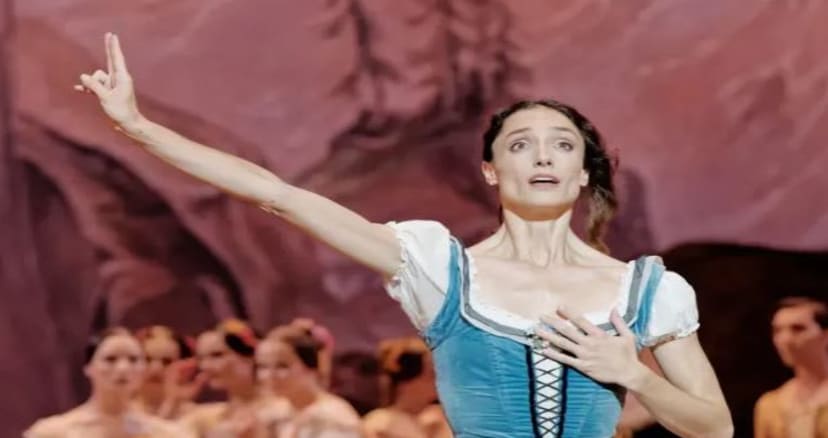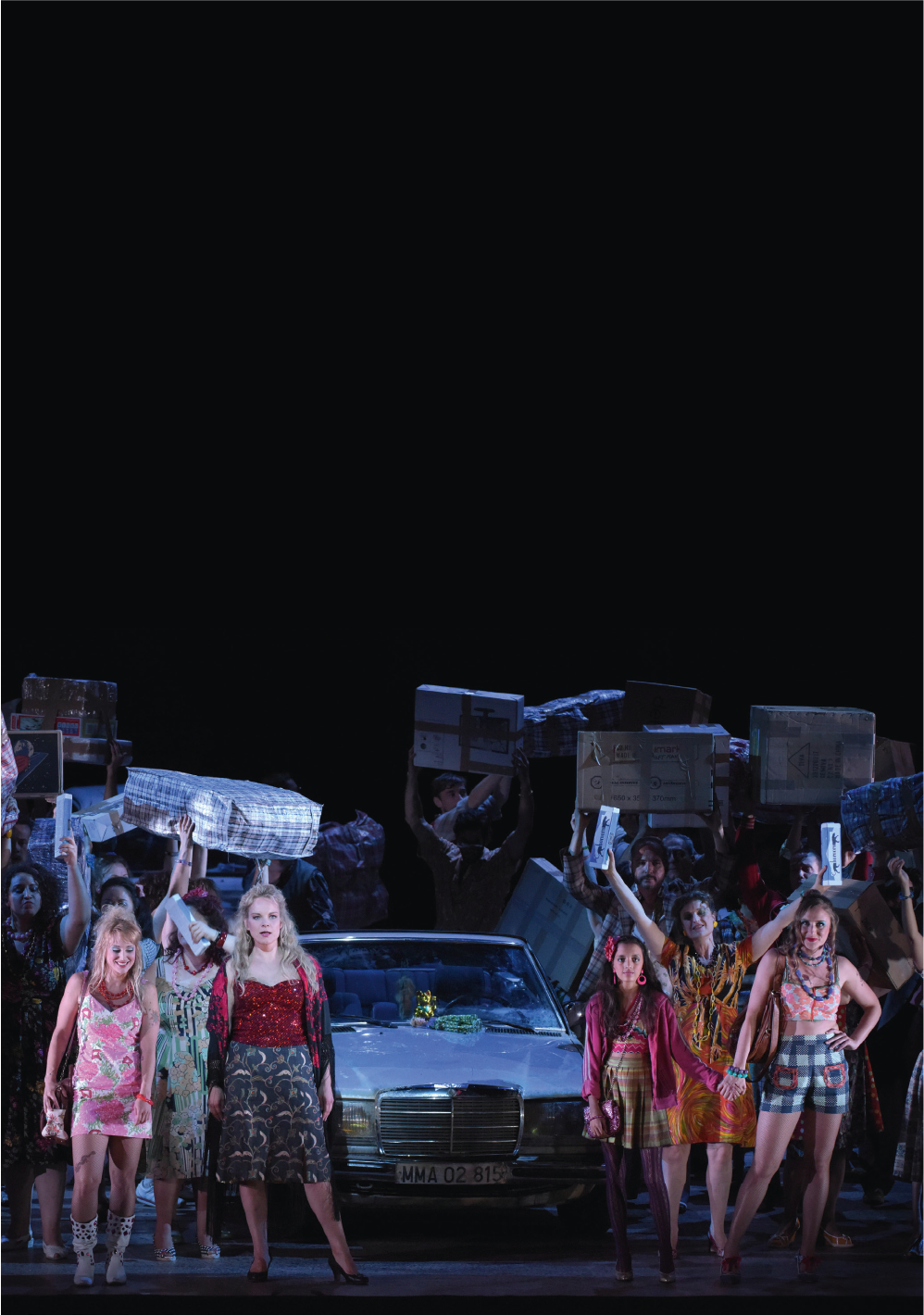Synopsis
Listen to the synopsis
It begins like a fairy tale: the charming peasant girl Giselle loves a young man who, beneath his rustic attire, turns out to be a duke. Alas! Albrecht – that is his name – cannot marry her because he is already engaged.
Discovering this, Giselle sinks into madness and death. She is taken in by the Wilis, the souls of young girls abandoned by unfaithful lovers. Will she take revenge on Albrecht by luring him to his death, or will love and forgiveness triumph?
First performed in 1841 at the Royal Academy of Music, Jules Perrot and Jean Coralli’s ballet – here adapted by Patrice Bart and Eugène Polyakov – ushered in a new aesthetic in the history of Western dance.
Pointe shoes, arabesques and long white tutus conjure up a fantastical, diaphanous universe that has become the very embodiment of Romanticism.
Duration : 2h10 with 1 interval
Artists
Only for performances on 30 Sept. and 2 Oct. 2025
The Paris Opera Orchestra
With the participation of the Paris Opera Junior Ballet and Ballet School
Étoiles tutus and tiaras designed by Chanel
Creative team
Only for performances on 30 Sept. and 2 Oct. 2025
Entry to the repertoire - With the Junior Ballet
Creative team
Ballet in two acts (1841)
Creative team
With the Paris Opera Étoiles, Premières Danseuses, Premiers Danseurs and Corps de Ballet
The Paris Opera Orchestra
Media


Starring Étoile dancers Dorothée Gilbert, Mathieu Ganio, Valentine Colasante...
Access and services
Palais Garnier
Place de l'Opéra
75009 Paris
Public transport
Underground Opéra (lignes 3, 7 et 8), Chaussée d’Antin (lignes 7 et 9), Madeleine (lignes 8 et 14), Auber (RER A)
Bus 20, 21, 27, 29, 32, 45, 52, 66, 68, 95, N15, N16
Calculate my route-
Cloakrooms
Free cloakrooms are at your disposal. The comprehensive list of prohibited items is available here.
-
Bars
Reservation of drinks and light refreshments for the intervals is possible online up to 24 hours prior to your visit, or at the bars before each performance.
-
Restaurant
CoCo is open every day from 12:00 pm to 2:00 am. More information on coco-paris.com or at +33 1 42 68 86 80 (reservations).
At the Palais Garnier, buy €10 tickets for seats in the 6th category (very limited visibility, two tickets maximum per person) on the day of the performance at the Box offices.
In both our venues, discounted tickets are sold at the box offices from 30 minutes before the show:
- €25 tickets for under-28s, unemployed people (with documentary proof less than 3 months old) and senior citizens over 65 with non-taxable income (proof of tax exemption for the current year required)
- €40 tickets for senior citizens over 65
Get samples of the operas and ballets at the Paris Opera gift shops: programmes, books, recordings, and also stationery, jewellery, shirts, homeware and honey from Paris Opera.
Palais Garnier
- Every day from 10:30 a.m. to 6 p.m. and until performances end
- Get in from Place de l’Opéra or from within the theatre’s public areas
- For more information: +33 1 53 43 03 97
Online
Palais Garnier
Place de l'Opéra
75009 Paris
Public transport
Underground Opéra (lignes 3, 7 et 8), Chaussée d’Antin (lignes 7 et 9), Madeleine (lignes 8 et 14), Auber (RER A)
Bus 20, 21, 27, 29, 32, 45, 52, 66, 68, 95, N15, N16
Calculate my route-
Cloakrooms
Free cloakrooms are at your disposal. The comprehensive list of prohibited items is available here.
-
Bars
Reservation of drinks and light refreshments for the intervals is possible online up to 24 hours prior to your visit, or at the bars before each performance.
-
Restaurant
CoCo is open every day from 12:00 pm to 2:00 am. More information on coco-paris.com or at +33 1 42 68 86 80 (reservations).
At the Palais Garnier, buy €10 tickets for seats in the 6th category (very limited visibility, two tickets maximum per person) on the day of the performance at the Box offices.
In both our venues, discounted tickets are sold at the box offices from 30 minutes before the show:
- €25 tickets for under-28s, unemployed people (with documentary proof less than 3 months old) and senior citizens over 65 with non-taxable income (proof of tax exemption for the current year required)
- €40 tickets for senior citizens over 65
Get samples of the operas and ballets at the Paris Opera gift shops: programmes, books, recordings, and also stationery, jewellery, shirts, homeware and honey from Paris Opera.
Palais Garnier
- Every day from 10:30 a.m. to 6 p.m. and until performances end
- Get in from Place de l’Opéra or from within the theatre’s public areas
- For more information: +33 1 53 43 03 97
Online

Discover opera and ballet in another way

Dive into the Opera world and get insights on opera and pop culture or ballet and cinema. Scan this code to access all the quiz and blindtests on your mobile.

3 min
Giselle
Giselle Quiz - Loves me, loves me not
When Giselle discovers that the dashing young man she loves is already betrothed to Princess Bathilde, she goes mad. Bathilde… Maybe one of Batman’s relatives? Anyway, the last scene of the first act ends with the death of Giselle. Follow me, I’ll explain it to you, step by step.
DiscoverYou will also like
Partners
-
Principal Sponsor of the Paris Opera










































































